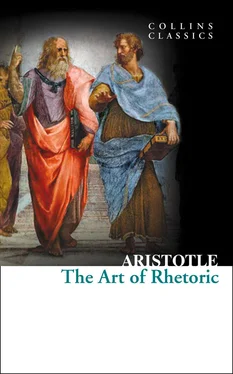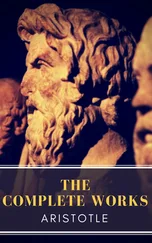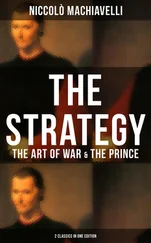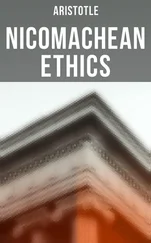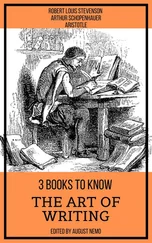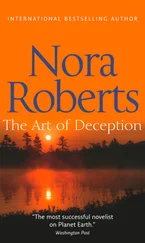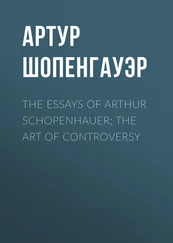THE ART OF
RHETORIC
Aristotle

CONTENTS
Title Page THE ART OF RHETORIC Aristotle
History of Collins History of Collins In 1819, millworker William Collins from Glasgow, Scotland, set up a company for printing and publishing pamphlets, sermons, hymn books and prayer books. That company was Collins and was to mark the birth of HarperCollins Publishers as we know it today. The long tradition of Collins dictionary publishing can be traced back to the first dictionary William published in 1824, Greek and English Lexicon . Indeed, from 1840 onwards, he began to produce illustrated dictionaries and even obtained a licence to print and publish the Bible. Soon after, William published the first Collins novel, Ready Reckoner , however it was the time of the Long Depression, where harvests were poor, prices were high, potato crops had failed and violence was erupting in Europe. As a result, many factories across the country were forced to close down and William chose to retire in 1846, partly due to the hardships he was facing. Aged 30, William’s son, William II took over the business. A keen humanitarian with a warm heart and a generous spirit, William II was truly ‘Victorian’ in his outlook. He introduced new, up-to-date steam presses and published affordable editions of Shakespeare’s works and Pilgrim’s Progress , making them available to the masses for the first time. A new demand for educational books meant that success came with the publication of travel books, scientific books, encyclopaedias and dictionaries. This demand to be educated led to the later publication of atlases and Collins also held the monopoly on scripture writing at the time. In the 1860s Collins began to expand and diversify and the idea of ‘books for the millions’ was developed. Affordable editions of classical literature were published and in 1903 Collins introduced 10 titles in their Collins Handy Illustrated Pocket Novels. These proved so popular that a few years later this had increased to an output of 50 volumes, selling nearly half a million in their year of publication. In the same year, The Everyman’s Library was also instituted, with the idea of publishing an affordable library of the most important classical works, biographies, religious and philosophical treatments, plays, poems, travel and adventure. This series eclipsed all competition at the time and the introduction of paperback books in the 1950s helped to open that market and marked a high point in the industry. HarperCollins is and has always been a champion of the classics and the current Collins Classics series follows in this tradition – publishing classical literature that is affordable and available to all. Beautifully packaged, highly collectible and intended to be reread and enjoyed at every opportunity.
Life & Times
Book I
Book II
Book III
Classic Literature: Words and Phrases adapted from the Collins English Dictionary
Copyright
About the Publisher
In 1819, millworker William Collins from Glasgow, Scotland, set up a company for printing and publishing pamphlets, sermons, hymn books and prayer books. That company was Collins and was to mark the birth of HarperCollins Publishers as we know it today. The long tradition of Collins dictionary publishing can be traced back to the first dictionary William published in 1824, Greek and English Lexicon . Indeed, from 1840 onwards, he began to produce illustrated dictionaries and even obtained a licence to print and publish the Bible.
Soon after, William published the first Collins novel, Ready Reckoner , however it was the time of the Long Depression, where harvests were poor, prices were high, potato crops had failed and violence was erupting in Europe. As a result, many factories across the country were forced to close down and William chose to retire in 1846, partly due to the hardships he was facing.
Aged 30, William’s son, William II took over the business. A keen humanitarian with a warm heart and a generous spirit, William II was truly ‘Victorian’ in his outlook. He introduced new, up-to-date steam presses and published affordable editions of Shakespeare’s works and Pilgrim’s Progress , making them available to the masses for the first time. A new demand for educational books meant that success came with the publication of travel books, scientific books, encyclopaedias and dictionaries. This demand to be educated led to the later publication of atlases and Collins also held the monopoly on scripture writing at the time.
In the 1860s Collins began to expand and diversify and the idea of ‘books for the millions’ was developed. Affordable editions of classical literature were published and in 1903 Collins introduced 10 titles in their Collins Handy Illustrated Pocket Novels. These proved so popular that a few years later this had increased to an output of 50 volumes, selling nearly half a million in their year of publication. In the same year, The Everyman’s Library was also instituted, with the idea of publishing an affordable library of the most important classical works, biographies, religious and philosophical treatments, plays, poems, travel and adventure. This series eclipsed all competition at the time and the introduction of paperback books in the 1950s helped to open that market and marked a high point in the industry.
HarperCollins is and has always been a champion of the classics and the current Collins Classics series follows in this tradition – publishing classical literature that is affordable and available to all. Beautifully packaged, highly collectible and intended to be reread and enjoyed at every opportunity.
The Importance of Rhetoric
Rhetoric is, in itself, a rather ambiguous term. It is variously described as the art of persuasive, impressive or effective speaking, or orating. To say something rhetorical is thus said for effect rather than to elicit a response, answer or information; hence, the term ‘ a rhetorical question ’, which is a remark said in the form of a question but not meant as a direct enquiry. A ‘ moot point ’ is also rhetorical, as it may be an irrelevant remark designed to distract or digress, or it may be an open-ended question, with the answer left open to argument or debate. A rhetorician is someone skilled in their ability to win arguments by virtue of their use of figures or speech, platitudes, hyperbole, statements and compositional techniques, rather than for simply being correct. A simple way of defining rhetoric is to describe it as eloquent expression.
Aristotle’s The Art of Rhetoric dates from the 4th century BC and is widely considered to be the most important treatise on the subject. Aristotle was interested in rhetoric because he lived at a time when convincing people about philosophical ideas required a very persuasive personality. This is largely because science was not an established concept at the time, so people drew no clear distinction between ideas that could be epistemically evidenced and those based on belief. This is illustrated by the fact that matters of the real world were described as natural philosophy, and so were perceived as akin to all other forms of wisdom or knowledge. It was therefore necessary to have great skill at rhetoric in order to have any ideas entered into the public arena for consideration. Even greater rhetoric was then required to have those ideas gain any acceptance. It was no use having good ideas if one lacked rhetorical ability, so Aristotle felt it necessary to write notes of instruction on the matter. According to Aristotelian experts, he probably didn’t write his treatise with the intention of publication, but at a later date someone thought it worth compiling the component essays into a single work.
Читать дальше
